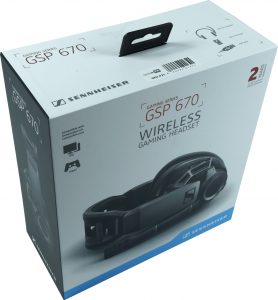 So Sennheiser has really taken it seriously, and the GSP 670 has been linked to the GSA70. The result is a really neat wireless headset, in which the implementation has been almost perfectly successful and in which only design-related limitations can be reported. But Sennheiser can’t do anything about it, because it’s in the nature of things to get a decent compromise between battery life, total level and feature set, which then also sounds good and sits comfortably.
So Sennheiser has really taken it seriously, and the GSP 670 has been linked to the GSA70. The result is a really neat wireless headset, in which the implementation has been almost perfectly successful and in which only design-related limitations can be reported. But Sennheiser can’t do anything about it, because it’s in the nature of things to get a decent compromise between battery life, total level and feature set, which then also sounds good and sits comfortably.
The design as a gaming headset is always visible and audible, of course you have to take this into account. If you have a small audiophile vein, you can use the supplied software and even switch between Horror-Schnetzler and Conrad Schnitzler at the push of a button on the headset. Then it works again with the music. But to all these details immediately more, because I don’t want to spoil everything in the intro.
What Sennheiser has achieved, however, is a headset that can be operated equally on the USB cable, can be persuaded to play latency-free using the GSA70 dongle (I measured) and also gets along with Bluetooth 5.0. While dongle and Bluetooth even work in parallel. A connectivity all-rounder.
Scope of delivery and software
Inside the box you will find the headset, the GSA70 dongle, the 1.5 meter long USB connection cable and a quick guide. You don’t need any more in the end and the supplied USB 2.0 cable is the connection and charging cable in one. For a headset of this price range, I would have liked a hard shell case for on the go and a combined dongle, which also serves as a data carrier for an online installer of the required software and the manual in PDF form.
Since the software is not yet final and Sennheiser does not plan the market launch of the GSP 670 until 01.07.2019, I will not include this part in the evaluation. What is positive is the built-in update function for the firmware of the headset, the dongle and also the gaming suite itself. Everything worked smoothly and the continuous progress of software development could also be determined. Meanwhile, the equalizer (EQ) for the GSA70 dongle also works quite neatly, but currently refuses functionality with a pure USB connection. In addition, the EQ could be more finely graded, but this is not technically possible (see Tear Down below).
Switching and emulation of the Virtual Surround is done and the sound processor renders exactly what you would expect from an electrical solution. It’s not my taste, especially since there’s still a kind of residual reverb when you’re outdoors. But these are subtleties that are probably less of an interest to players. The solution, despite all the mockery, is fundamentally sound.
Optics and haptics
Apparently, gaming headsets have to look different from regular stereo headphones, but Sennheiser has got the curve quite well, as with the GSP 600. Matte black plastic in varietal monoculture meets metal hinges and various materials for the covering of the soft but very well contoured ear pads. Visually, all this does not look very hip and filigree, but rather compact and crowded. But you can also like that, because it conveys a certain touch of consistency and it is above all one thing: timeless.
Well-calculated plastic insert can be suitable if it is only implemented well enough and the neuralgic points are supplemented with cleanly implemented metal parts. I will come to this in detail, but such things naturally also increase the weight. With the 405 grams net (weighed, the manufacturer’s specification is wrong with 398 grams) the headset is therefore not a lightweight, but in the end it weighs just as much as it looks and touches, namely anything but shaky or even fragile.
This makes the headset only marginally heavier than the GSP 600 with its 397 grams, despite its batteries and more complex circuit boards. The fact that Sennheiser gives an international guarantee for two years is more in favour of the part, because consumer protection is not as well regulated everywhere as in Germany.
Wearing comfort and functionality
Let’s move on to the two-axis joint mechanism, because Sennheiser relies on real joints both vertically and horizontally. The horizontally arranged joint on the earcup inside has been provided with a return spring, which helps to hold the position at the head. This is quite rare and it certainly shows the engineers thinking. In the tear down below I also have a picture of the inside, where you can see the spring.
The multi-shell cladding of the headband hides the quite wide disjointed ironing parts and the whole has a quite pronounced mechanism even for snapping, but you have to count, if you want to change the same setting later on. because there are unfortunately no visible marks for the position. This would have been the small and free step to complete perfection, but as with the GSP 600, it is not a dream concert with 5 free encores.
In addition to the generously sized length adjustment, which also suits European heads (hat size 62 is no problem at all), the headband can also be adjusted with regard to the contact pressure to be applied. You can confidently choose the interpretation of headbanging or permanent sitting, it fits both. So you can sit it tightly or lay it out very comfortably, but there is an extra point, because even glasses wearers are not left standing in the rain.
The textile-covered upholstery of the inside of the temple is fine. Although divided in the middle and open, the remaining rest is still able to cushion the pressure from above well enough, despite the quite high weight. In addition, the mechanics for adjusting the contact pressure have a nice side effect, because it makes the handle to the convertible and the fresh air has free access to the scalp. This will be appreciated after a longer period of wearing.
The ear pads are an interesting three-piece, which can also be easily removed by means of a simple holding mechanism with snapping noses. Three-parter because the choice of material was cleverly made. Held on the outside in the usual faux leather look, the support surface on the head is some Alcantara interpretation, while the inside strapped is textile. In addition to the neat foam inserts, the seams and various stiffnesses of the materials alone provide good contouring.
The textile inside of the upholstery also has a slightly dampening effect, which meets the sound. But I will come back to that in a while. The fact is that the parts finish so well that everything else from the outside hardly penetrates the ear. You can like it or hate it, but as a really closed system you will have to get used to it. When talking, this is a weird feeling and you should at least test if you don’t include your own microphone in the sound control of Windows in the playback. Otherwise, you almost feel like you’re in an audio chamber.
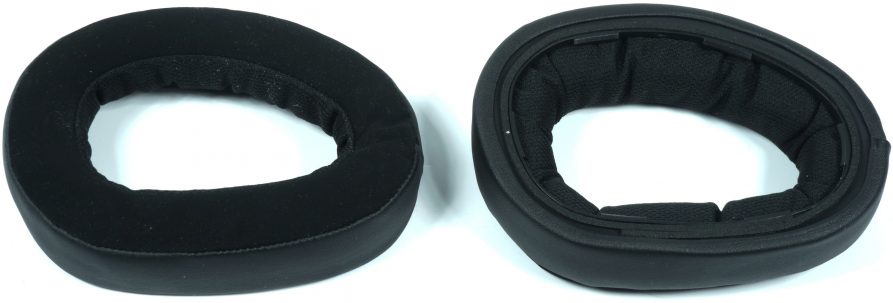
The volume control for the audio channel sits in the right shell and is arranged in the middle as a very large-area knob. This is intuitively accessible and quite convenient. The second knob on the right side is for the chat signal and coupled, so that you can even use a blending mixer function. Below it sits the button for the individual sound modes on the right, which can be deposited in the software and also modified. Just push through and finish.
The USB connector on the lower left side relies on a conventional connector to which a 1.5 m long cable for the PC is connected. You can also load and play at the same time. In the middle sits a status LED and above it the pairing button. The left rotary ring in the earcup is used for microphone fastening.
Microphone
The rotatable microphone arm on the left relies on the same design game as the controller on the right and also has an auto shut-off (mute) inside, if you fold it up. It is even adjustable to a certain frame, because conditionally flexible, so that one can change the direct distance to the mouth still something. But it didn’t help much. But more on the next page. Even the one with the ambient noises is such a thing in itself, because also the side facing the head is open. But I still have the sound samples on the next page.
If you want, you will also find various microphone options for control in the Gaming Suite. The microphone installed here sounds via the USB or dongle connection is significantly different from the directly connected microphone of the GSP 600. But for this I have planned an extra section on the next page, which also contains the measurement results.
Connectivity, battery, and runtime
Somehow, everything goes with this headset. You can connect it to your smartphone as a Bluetooth device, either even play gaming with the low-latency GSA70 dongle at the same time and charge it in parallel via the USB cable, use BT and USB without a dongle, or only as a wireless configuration Operate. Charging is quite fixed, especially since the charging process recharges so much power in the first 10 minutes that it is sufficient for another 2 hours with increased volume.
However, the 16 hours of the GSA70 dongle can only be achieved if you do not fully control the headset. With full roar with music is after approx. 13 hours to go. In gaming, though, that may come with the 16 hours if you don’t overdo it. But you don’t have a continuous flood of levels when it comes to gaming. The 20 hours in pure Bluetooth mode can even be surpassed if you don’t hear too loudly. If so, however, this term is reduced quite neatly to approx. 14 to 15 hours.
Tear Down and Sounding
From the outside, we see the textile-covered use of the driver, which is slightly oblique, so that the sound waves hit the ear canal a little more purposefully. At the top and bottom there are still nonwoven-glued openings that serve the sound design.
The 50 mm neodymium driver sits once again in a closed capsule that has been firmly glued in. This chamber also has the pressure equalization to the rear and a further opening glued with fleece. Thus, the entire inner volume does not serve as a sound body, but only to a discreet extent.
The built-in battery is labelled on Sennheiser and is good for 1.3 Wh according to the imprint. Roughly calculated, this would be 10 hours with 130 mW and 20 hours with 65 mW power extraction. Of course, it is not so easy to share this due to the characteristics of such batteries, but this is a good guideline. This would also prove that the headset can last as long as the rest is right.
But what is behind the latency-free wireless? Of course I can give you this answer too! Sennheiser relies on a CSR8670, a SoC from Qualcomm. This 80 MHz (DSP, MCU) clocked “Kalimba”-SoC is in fact an egg-laying woolly sow, because on the one hand it allows on the one hand the entire Bluetooth 5.0 program, including all codecs (TrueWireless, aptX, cVc) and on the other hand of course takes over the complete Charging and receiving the battery, the USB port (charging, data) and it contains all the audio peripherals (inputs, outputs) including all DACs.
The chip also offers a 5-channel equalizer, which also explains the rather rough gradation in the software. In addition, the SoC also contains 16 MB of flash memory, which would then also clarify where the firmware of the Sennheiser GSP 670 was stored. So it’s all about it and it’s in it, but it’s not a solution of its own, it’s a (really neat) one from Qualcomm.

Azoteq’s built-in IQS620A is a multi-sensor chip that can be used to trigger and monitor a wide range of sensors (hall, temperature sensors) and fits well with the CSR8670’s MCU (microcontroller). This story is really tricky, because in the cover of the shell, besides the chamber for the driver, a hall sensor is apparently installed (see picture below) and connected to the IQS620A. Now, of course, one can speculate very well what such a sensor has to look for at this point, but the manufacturer must have already seen some sense in it.
In the picture below you can also see the already mentioned return spring, which makes a quite stable and durable impression.

Technical data
But before we get to the actual test in practice, quickly all the data and manufacturer’s specifications, but I have to note that information on the frequency curve without a similar definition of the tolerance range is just as misleading and incomplete. such as an indication of the sound pressure level without the relevant reference value for the output power to be applied for the purpose, or Voltage. Milliwatt or Volt RMS? Unfortunately, no one tells me that.
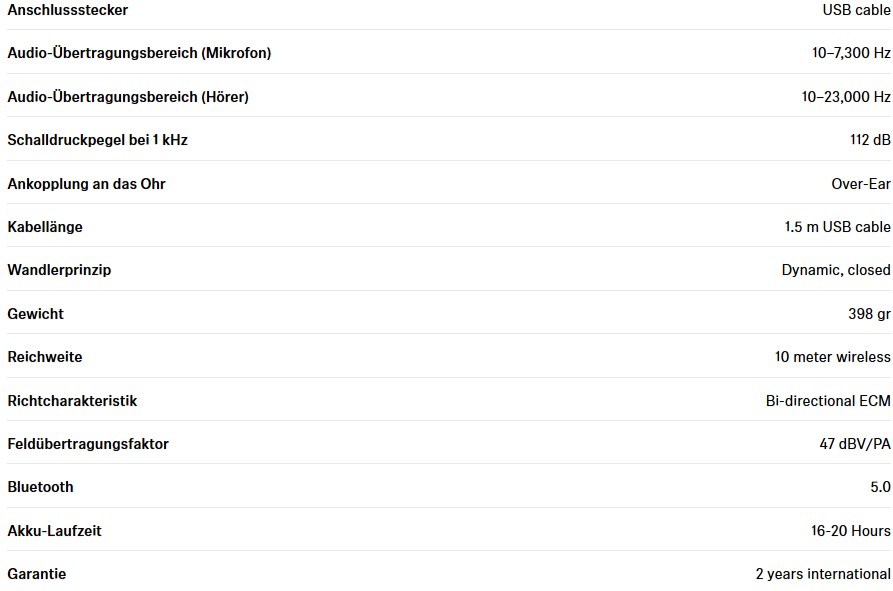














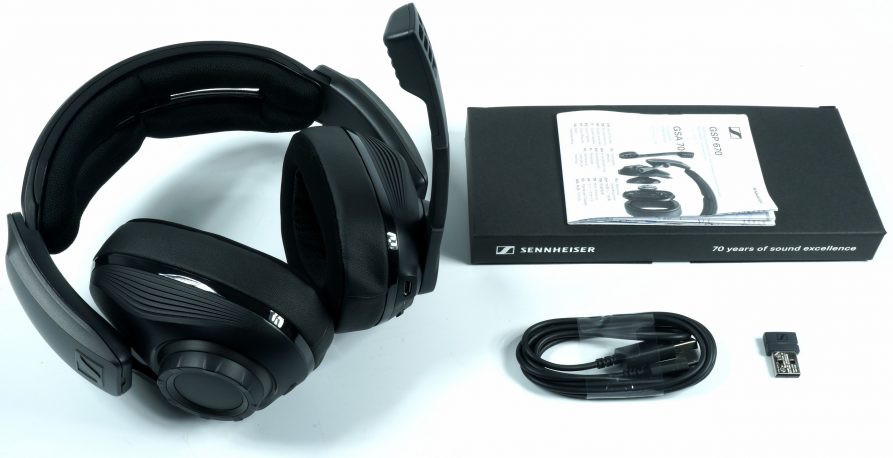








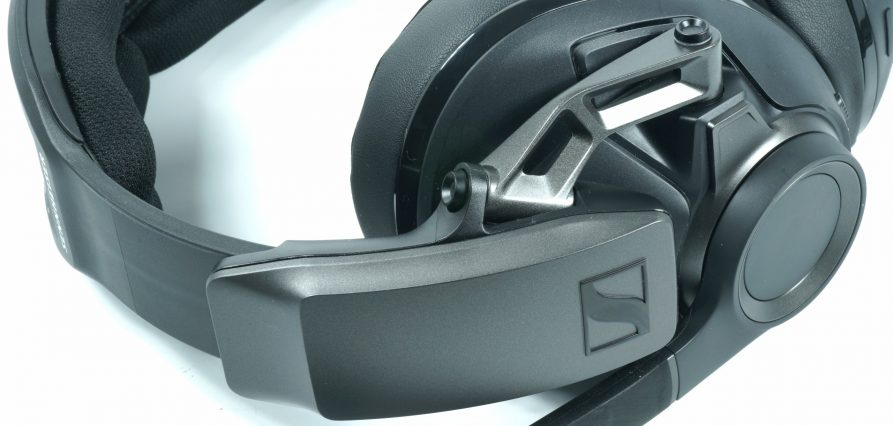
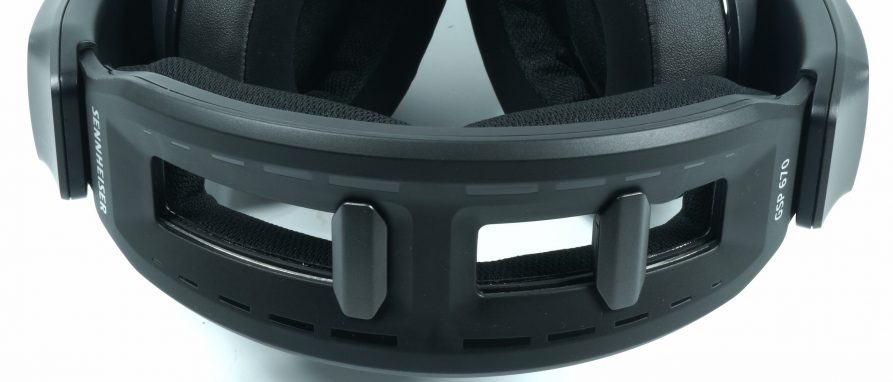

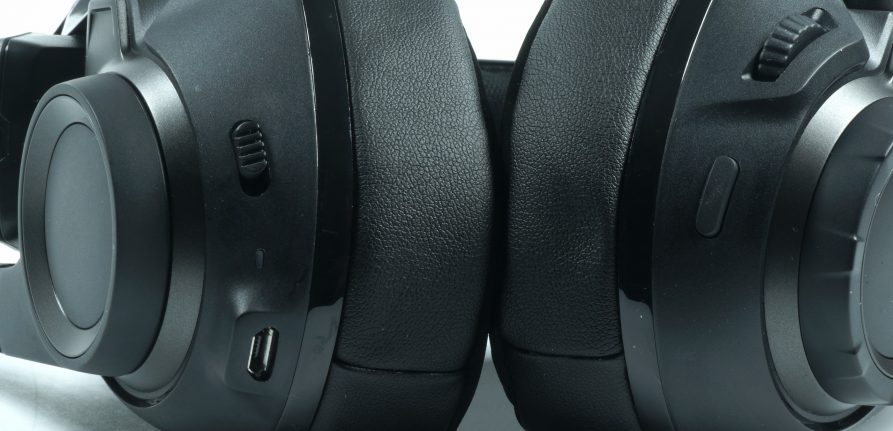


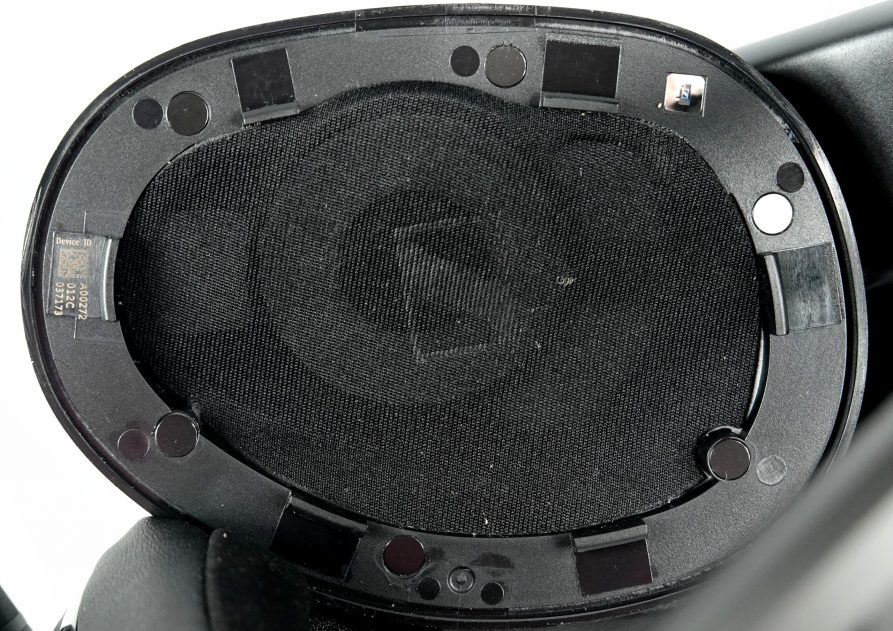
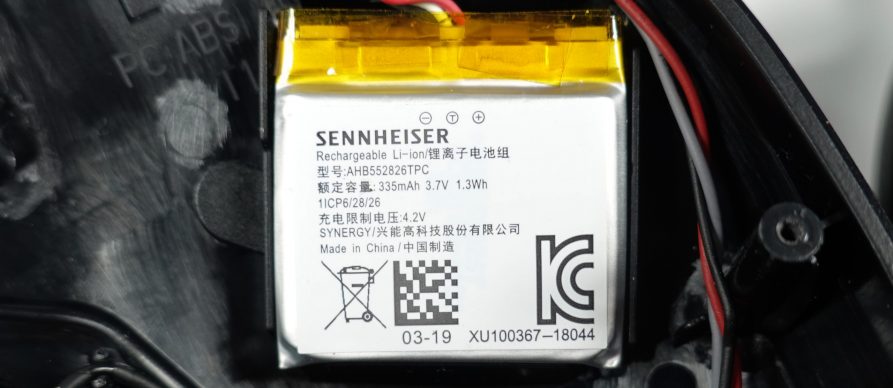
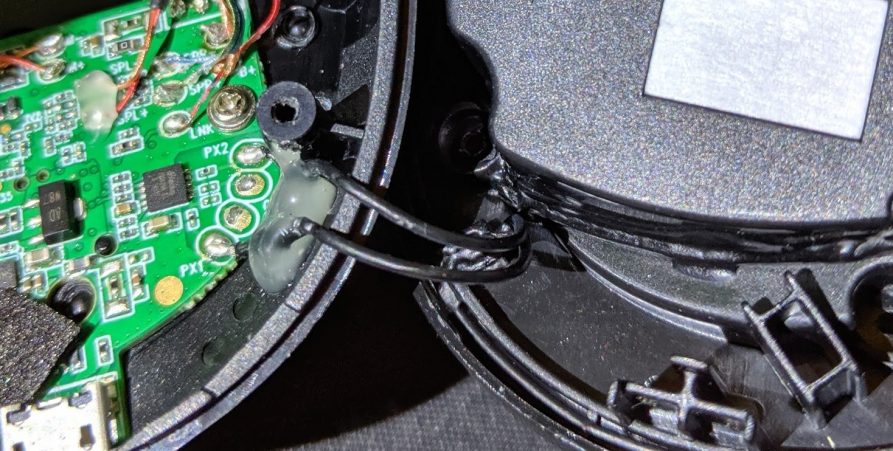


















Kommentieren